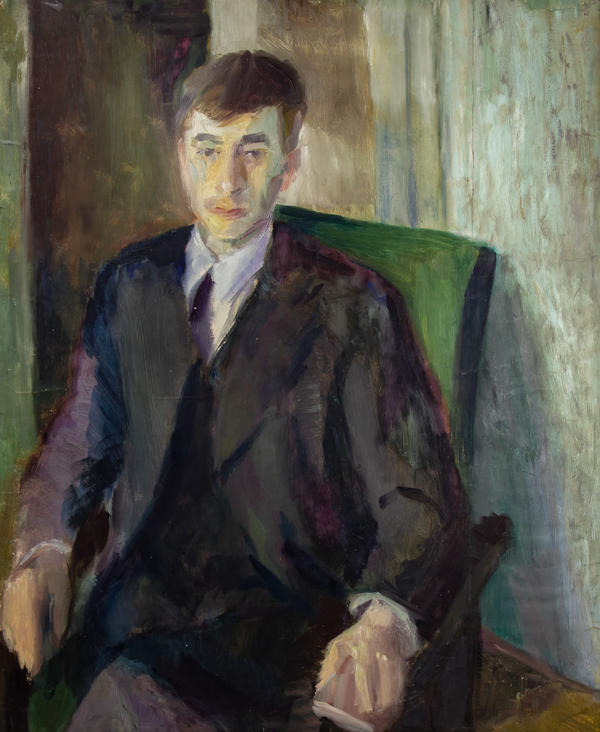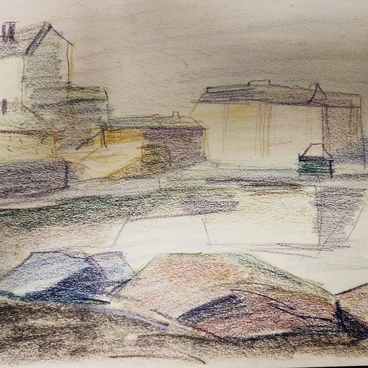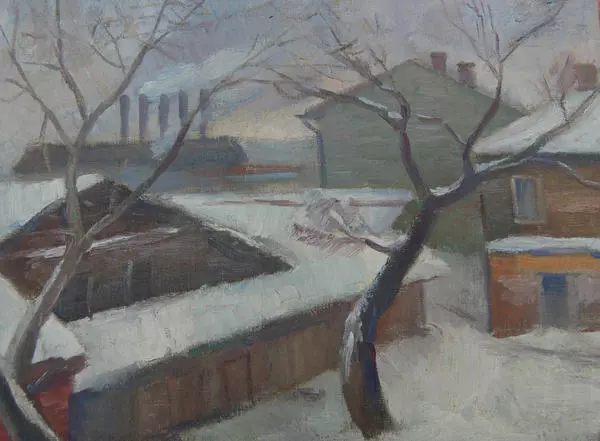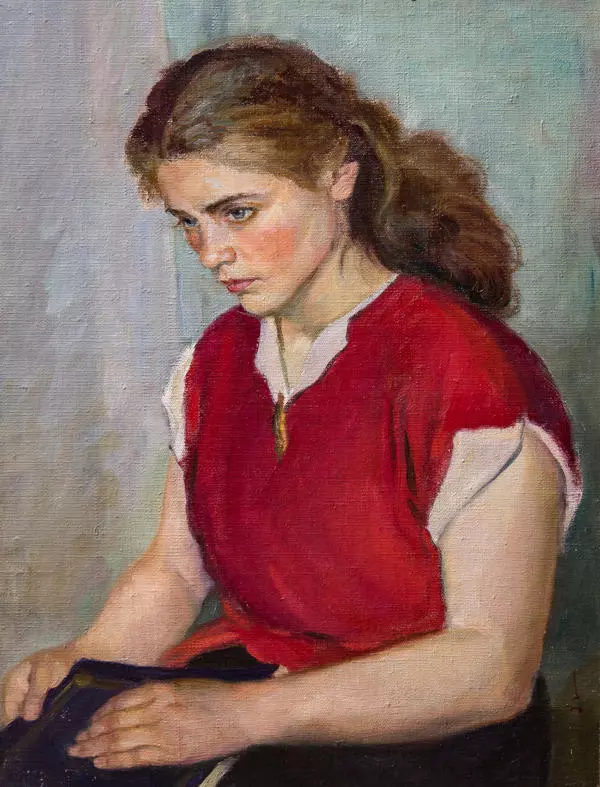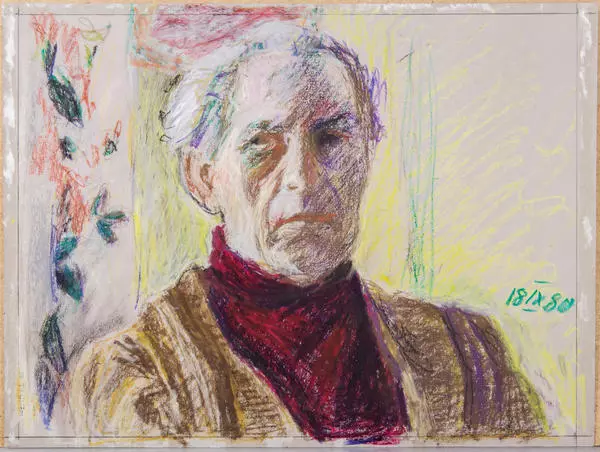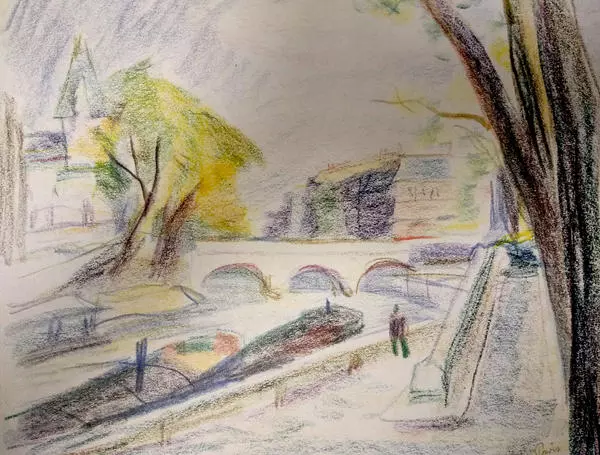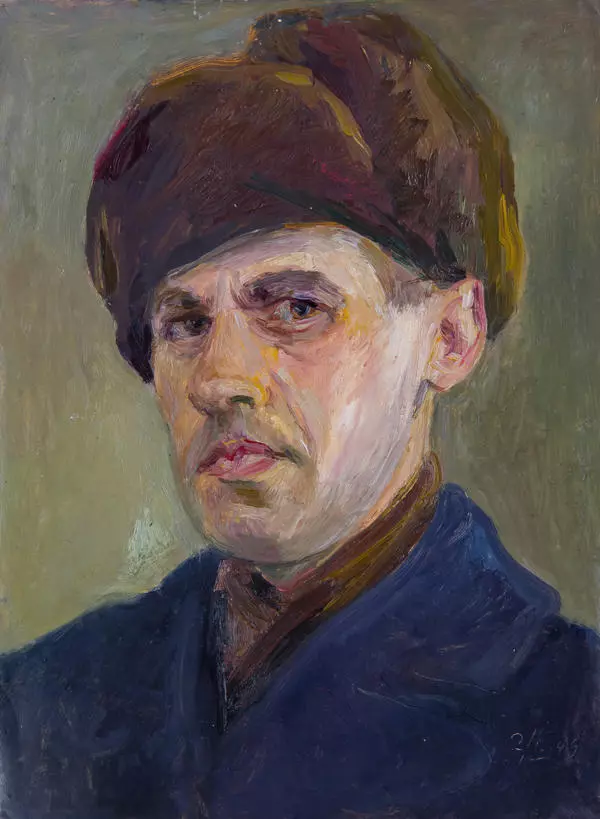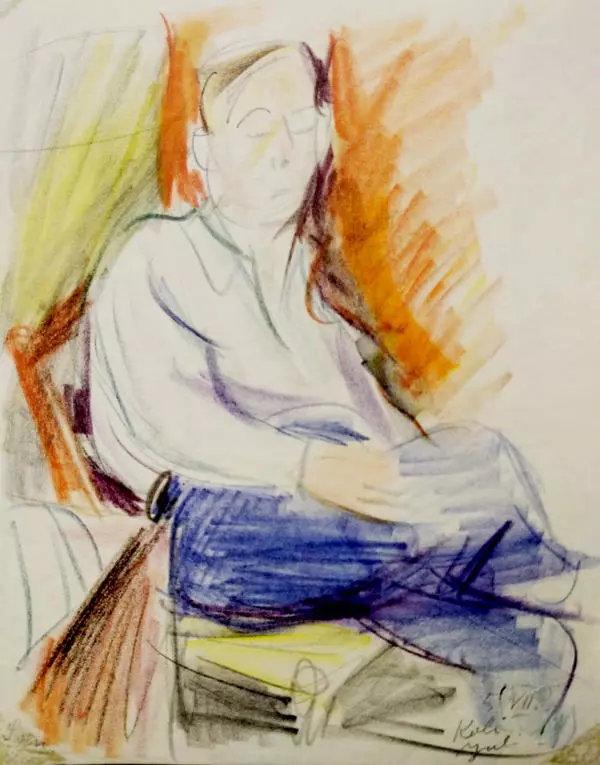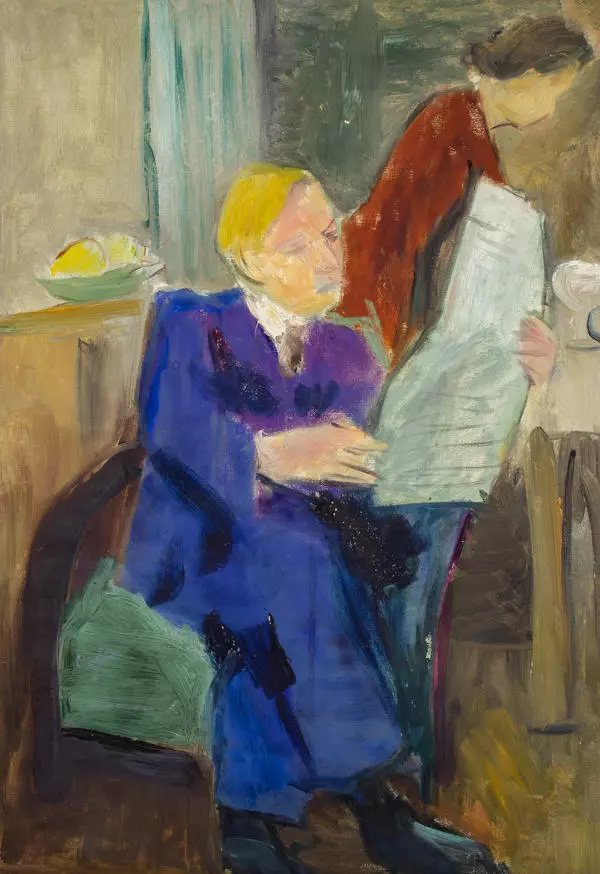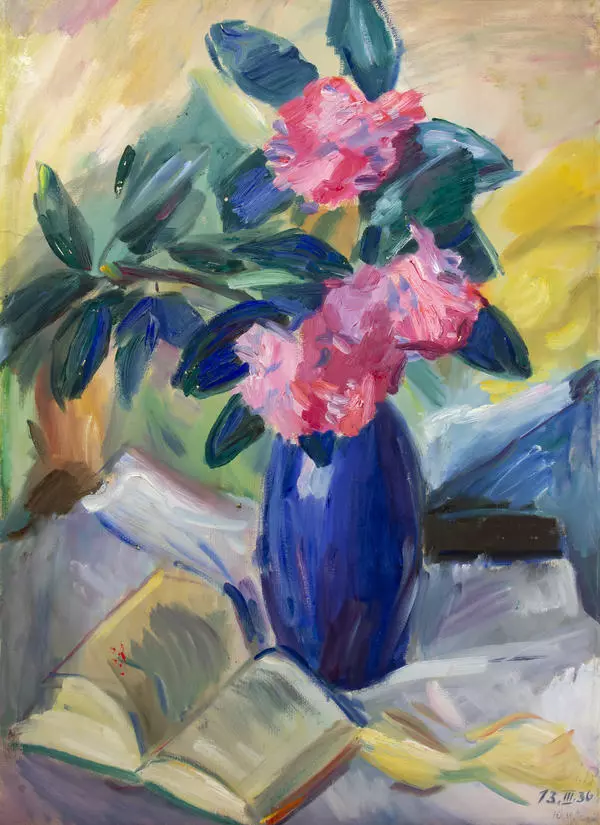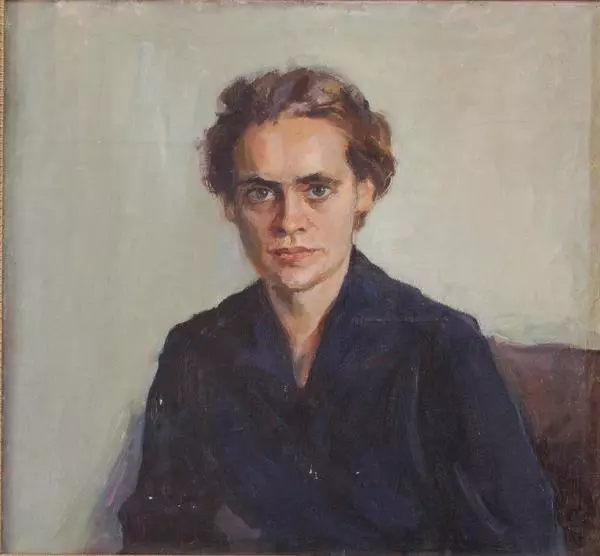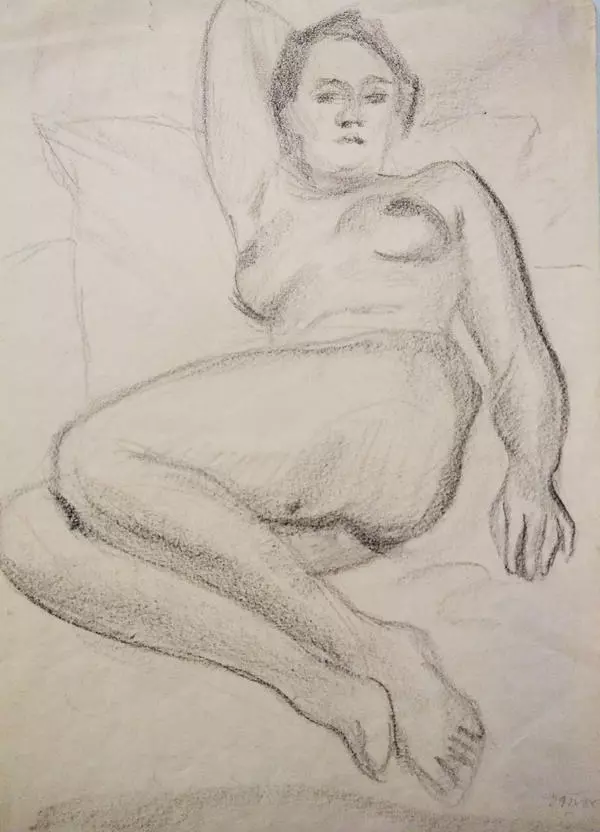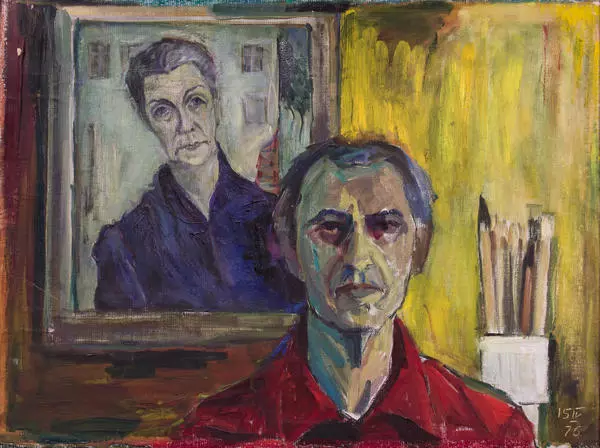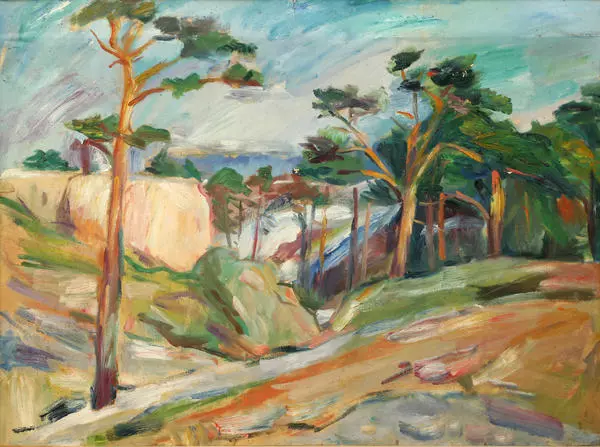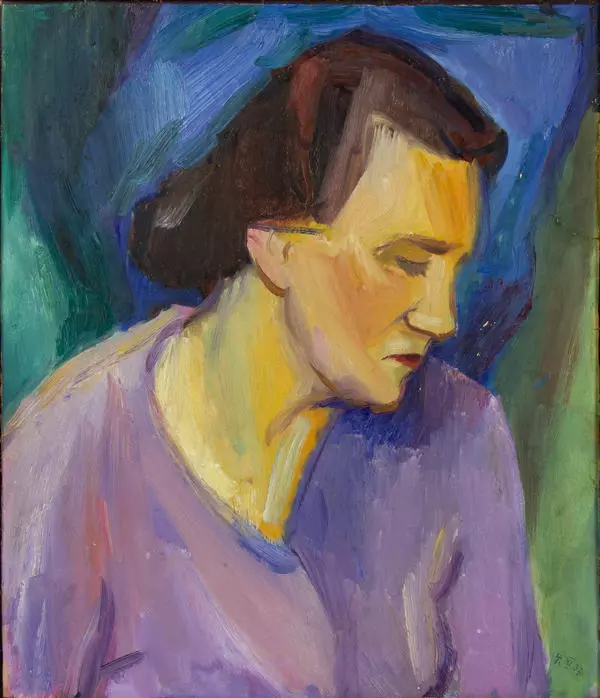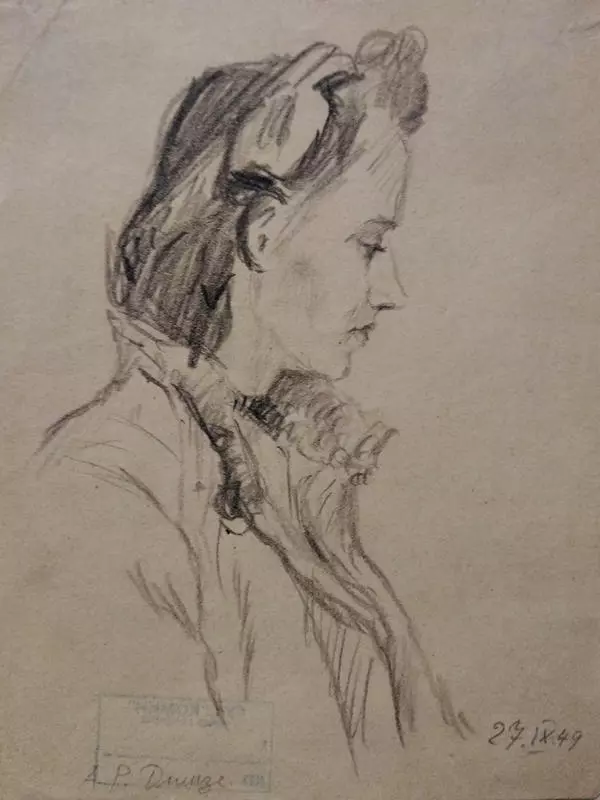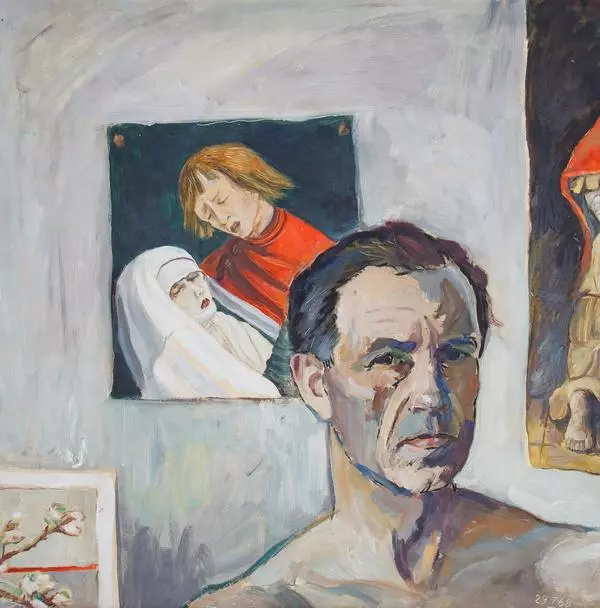European period occurred in the 1930s can be characterized as the most quiet and bright working period of this painter. At that time, Gans Richard Preiss who had not changed yet his name to Lithuanian one was travelling with journalist Gertrude Gennis, his first wife, across Hungary, Germany, Turkey, and Yugoslavia. It was no coincidence that their itinerary included countries with politically volatile environment as the spouses belonged not only to artistic elite but also to military intelligence and worked for the USSR.
During his trips, the painter created many works and in Europe he even had his personal exhibition. The majority of his works are still lifes and portraits of the painter’s relatives and close friends.
In 1938, the artist painted the portrait of Rabbe Enchell. The writer in a grey suit sat in a green armchair against a beige wall. The expression of his face and posture convey his relaxed manner, for example, he looks openly and directly and his hands lay loosely on the armchair.
The author chose paper and oil to paint this portrait. Lilac, ochre, and “sea” undertones are combined with rather muted colors. His painting manner is free and expressive brushstrokes can be seen even among dark colors as the painter used dynamic lines along with colors to convey expression.
According to some artists of early 20th century, portraits must convey a dialogue between the painter and his model that added some intimacy to the painting. The young Gans Richard Preiss shared this approach as he paid a lot of attention to the sensuous component of a painting or a drawing and tried to convey the model’s emotions. Though Jurgis Preiss came to live in the USSR in 1939 and became a Soviet citizen, all his life he despised the type of naturalism and realism Stalin liked and called such painting novels in pictures.
The portrait of Rabbe Enchell was brought to the collection of Kemerovo Regional Museum of Fine Arts from the collection of Ludmila Biryukova, a stepdaughter and heiress of the painter. In 1992, she presented the painting to the museum.
During his trips, the painter created many works and in Europe he even had his personal exhibition. The majority of his works are still lifes and portraits of the painter’s relatives and close friends.
In 1938, the artist painted the portrait of Rabbe Enchell. The writer in a grey suit sat in a green armchair against a beige wall. The expression of his face and posture convey his relaxed manner, for example, he looks openly and directly and his hands lay loosely on the armchair.
The author chose paper and oil to paint this portrait. Lilac, ochre, and “sea” undertones are combined with rather muted colors. His painting manner is free and expressive brushstrokes can be seen even among dark colors as the painter used dynamic lines along with colors to convey expression.
According to some artists of early 20th century, portraits must convey a dialogue between the painter and his model that added some intimacy to the painting. The young Gans Richard Preiss shared this approach as he paid a lot of attention to the sensuous component of a painting or a drawing and tried to convey the model’s emotions. Though Jurgis Preiss came to live in the USSR in 1939 and became a Soviet citizen, all his life he despised the type of naturalism and realism Stalin liked and called such painting novels in pictures.
The portrait of Rabbe Enchell was brought to the collection of Kemerovo Regional Museum of Fine Arts from the collection of Ludmila Biryukova, a stepdaughter and heiress of the painter. In 1992, she presented the painting to the museum.

